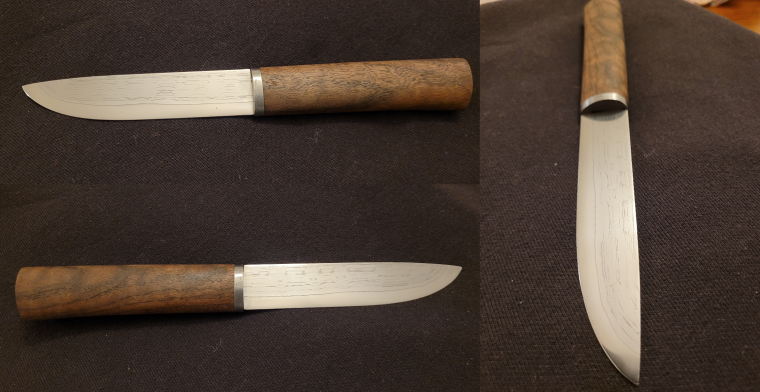Greetings! Today I am presenting for your consideration a Northern European seax knife from approximately the 9th century. The blade is primarily made of wrought iron, while the cutting edge is high carbon steel, forge welded to the wrought iron. This was a common practice throughout much of medieval history due to the significantly higher cost of steel compared to iron.
I made the seax in 2020 before moving home to The East from Meridies. I hope you enjoy seeing it as much as I enjoyed the process of making it.

I really enjoyed reading your documentation, nicely done. I don’t know much about this subject but found your explanations really approachable and easy to follow. Really liked your explanation about 19th c. Iron vs bloomed. Great project!
Thank you! I appreciate your feedback on my documentation. It always struggle to find the right tone…
This is beautifully crafted! I found reading your documentation enjoyable as well. My husband is a blacksmith, and I have had many discussions with him about forge welding techniques, among other things, so I recognized a lot of familiar terms and concepts in your writing. It’s obvious you put a lot of work into perfecting this, and I love that you included your failed welds as well as the successful ones. Thank you for sharing!
Thank you for your kind words! Maybe someday your husband and I can talk shop 🙂
The failed welds are crucial in my opinion. I feel those failures are how we learn and move forward in our art, whatever that art may be.
Your documentation is fantastic. Taking the metallurgy from “this is what they were made of historically” through “this is how I replicated that” is really a process I enjoy.
Aside from the research, the application is beautiful. That’s a sweet looking blade.
Thanks so much for your feedback. I’m glad you like the seax itself, and also my documentation.
I struggled with the documentation a bit. I’m glad it seems to have e caught a reasonable balance.
A beautiful blade, and a wonderfully detailed explanation of your process. Thanks for sharing!
You are most welcome! Thank you for your kind words.